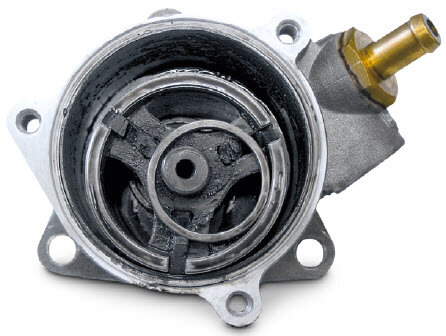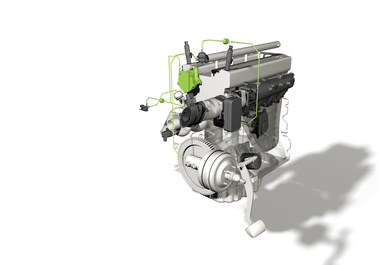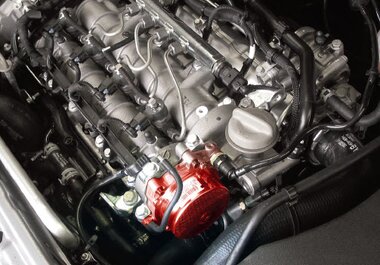
Damage to vacuum pumps due to insufficient lubricating oil supply
Information on diagnostics
What happens if the vacuum pump is insufficiently lubricated? What damage could occur? How do you test the lubricating oil feed? What versions of the lubricating oil supply are there? You can find the answers in this technical article.
| Vehicles | Product |
| all vehicles with vacuum pumps | Vacuum pumps with rotary drive |
Lubricating oil that is past its change date or is contaminated can cause premature wear in a vacuum pump.
Old engine oil contains many dirt particles from the mechanical abrasion of the engine or soot particulates from the exhaust gas.
Potential complaints:
- Jammed or damaged vacuum pump
- Drivers on the vacuum pump or the camshaft are broken off
- Damage to the camshaft
Rotating vane vacuum pumps are the latest means of generating a vacuum. These vacuum pumps, like any other, require a good supply of lubricating oil. In most cases this is taken from the engine oil circuit. The lubricating oil together with the air that was pumped out is returned into the cylinder head. But if the lubricating oil supply is insufficient or faulty the vacuum pump will suffer malfunctions and damage even in a relatively short time. These must then be replaced. A jammed vacuum pump can lead to further damage elsewhere.
OIL FEED VARIANTS
The lubricating oil supply can be carried out in different ways:
1. Direct lubrication via an oil pipe
The camshaft is connected to the vacuum pump by an oil pipe.
2. Spray lubrication through the camshaft
The oil channel is incorporated in the camshaft.
3. Direct lubrication through the flange
The oil supply is performed through channels in the face of the flange, i.e. radially to the vacuum pump.
CHECKING THE LUBRICATING OIL FEED
Modern high-performance vacuum pumps need a volumetric flow of 30 to 60 litres per hour. Before fitting a new vacuum pump it is therefore essential to check that the lubricating oil feed is functioning correctly:
- Remove the vacuum pump
- Protect attached parts against the oil flow
- Hold a receptacle (measuring jug or similar) to the lubricating bore or channel.
- Run the engine briefly at idling or turn it over using the starter motor, to check the oil flow delivery
- Oil must flow out of the relevant lubricant channel or oil pipe continuously or with an even pulse rate (models: see above). If this is not the case: resolve the cause (e.g. blockage)
Take great care to keep everything scrupulously clean! Deposits in the oil and fragments of gaskets can block the lubricating bores.

